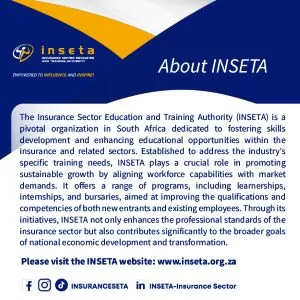Technology
Job Hunting in 2025: LinkedIn’s AI Knows More About You Than You Think

- Learn how LinkedIn’s new AI models make a more intelligent interpretation of your skills and experience.
- Get to know what practical measures to use in upgrading your profile to yield better job search results.
LinkedIn has long been a staple in the professional lives of millions across the globe, but its latest overhaul marks a fundamental shift in how you might find your next job. No longer just a digital resume or a place to make connections, LinkedIn is now powered by refined artificial intelligence tools built on a technology known as LLM distillation. These changes go beyond aesthetics or backend updates. They redefine how the platform interacts with you, how it understands your profile, and how it suggests career opportunities tailored specifically to your background and aspirations.
What is all this if you are hunting for a job or thinking of changing careers? If AI feels behind the scenes, it is in the search, assisting while learning from you and your activities. Let us get to the changes, understand their impact on job hunting, and see what one can do to maintain a shaving edge during the involved competition due to AI.
What Is LLM Distillation and Why Does It Matter for Your Job Search
To understand how your LinkedIn experience is evolving, one must first understand what LLM distillation is. LLM distillation simplifies very large language models such as ChatGPT, turning them into smaller, faster, or more efficient tools. These distilled models retain much linguistic ability from their large counterparts but require less computing power and can churn out results in less time. Practically, this means that LinkedIn is now able to deploy intelligent real-time tools to its users without impacting your experience or requiring supercomputers to operate behind the scenes.
These distilled models are already being used to match jobs to candidates, summarise user profiles, provide writing suggestions for posts and summaries, and offer prompts to improve profile visibility. They’re designed to understand context, nuance, and tone — and they can assess your experience in a more holistic way than traditional keyword scanning ever could.
How These AI Changes Improve the Job-Seeking Process
One of the biggest challenges job seekers face on LinkedIn is standing out. When hundreds of thousands of applicants apply for the same job, even the best candidates get lost in the noise. LinkedIn’s new AI aims at solving this by improving how profiles are analysed and matched to job opportunities. These new models do not just work at a keyword level but examine work experience to glean deeper meaning.
For instance, if one’s profile specifies that he or she “led a product analytics initiative”, the AI does not simply parse out “product” and “analytics”. It understands that the individual led a project, communicated with stakeholders, interpreted data, and worked with cross-functional teams. It identifies the story behind the bullet point, and that story is what recruiters want to see.
With the new tools, you’ll notice:
- More accurate job matches based on nuanced profile reading
- AI-generated suggestions for improving your profile’s impact
- Context-aware nudges when visiting company pages or job listings
- Automated writing help for headlines, summaries, and even cover letters
These are not hypothetical features. The changes are currently rolling out across the platform and will affect how jobs are recommended for you and how your profile appears in recruiter searches.
What Recruiters See Has Also Changed
It’s not just job seekers who are benefiting. The recruiter now gets a much more refined view of potential candidates. LinkedIn’s AI evaluates profiles on the criteria of contextual relevance rather than surface keyword hits. For job seekers, the quality has never been more important. A well-written and detailed profile capturing one’s work experience will go further than a profile of several keywords strewn around.
Recruiters using AI tools on LinkedIn can now:
- Receive ranked lists of candidates based on profile relevance
- Access AI-generated candidate summaries
- Get recommendations for outreach messages tailored to each candidate
This raises an important question: Is your profile written in a way that communicates your value?
What You Should Do Right Now
There are specific, actionable steps you can take to make sure you’re getting the most out of LinkedIn’s AI-powered ecosystem.
- Refresh your headline: Think of your headline as a statement of your professional identity. Be specific. Avoid buzzwords.
- Enable AI suggestions: Let LinkedIn’s tools assist with summary writing. You can always tweak the result.
- List detailed work experience: Include bullet points that explain what you did, how you did it, and what the results were.
- Add all relevant skills: The more complete your profile, the better the AI can analyse it.
- Engage regularly: like, comment, and post. The AI models learn from your behaviour to refine your job feed.
These updates to your profile will not only help you appear in more recruiter searches but will also ensure that the opportunities you’re shown are genuinely aligned with your strengths and interests.
The Numbers Behind LinkedIn’s AI Push
To understand the scale of what LinkedIn is doing, consider these data points:
- LinkedIn has over 1 billion users globally.
- More than 1.5 billion job recommendations are generated each week
- 74% of hiring managers are open to AI-assisted recruitment tools
These numbers show that AI is no longer a future add-on — it’s central to the current experience. With such wide implementation, understanding how to align your activity with AI’s strengths is no longer optional.
Making Sense of Job Recommendations
You might notice changes in the types of job listings that appear in your feed. The new system doesn’t just show jobs with matching titles. It evaluates whether your skills, past roles, and interests make you a realistic candidate, even if the job title isn’t an exact match.
This means you should pay attention to what’s appearing and why. Click on listings even if they seem slightly off. Every action helps fine-tune the algorithm.
Also, revisit your career interests settings. The more detailed your preferences are, the smarter the system becomes in tailoring listings to your needs.
Future of AI on LinkedIn
LinkedIn’s AI journey is far from over. The platform is actively expanding AI into areas beyond job search. You’ll soon see tools that:
- Recommend learning paths and certifications based on your profile
- Suggest new connections based on shared goals or industries
- Create career roadmaps showing how to get from your current job to your dream role
These upcoming tools could fundamentally change how you think about career development. Instead of passively searching, you’ll be guided through steps, courses, connections, and content designed to help you grow.
Should You Rely Completely on AI?
Not entirely. AI is a support system, not a substitute for critical thinking. You should use the tools LinkedIn provides, but also make your judgments about the roles you pursue. Look at culture fit, mission alignment, and growth potential — things no algorithm can fully capture.
Always read job descriptions carefully. Reach out to current or former employees. Prepare thoughtful applications. These human elements still matter.
A Smarter Way to Job Hunt
The shift to LLM distillation on LinkedIn reflects a broader change in the job market. The platforms you use to find work are no longer passive directories. They’re active participants in your job search.
By understanding how these systems work and adapting your approach, you can improve your chances of landing meaningful opportunities. Start by updating your profile. Then, interact. Let the AI learn from you. And always be open to refining your strategy as the tools improve.
Your next job might just be a click — or a prompt — away.



















































